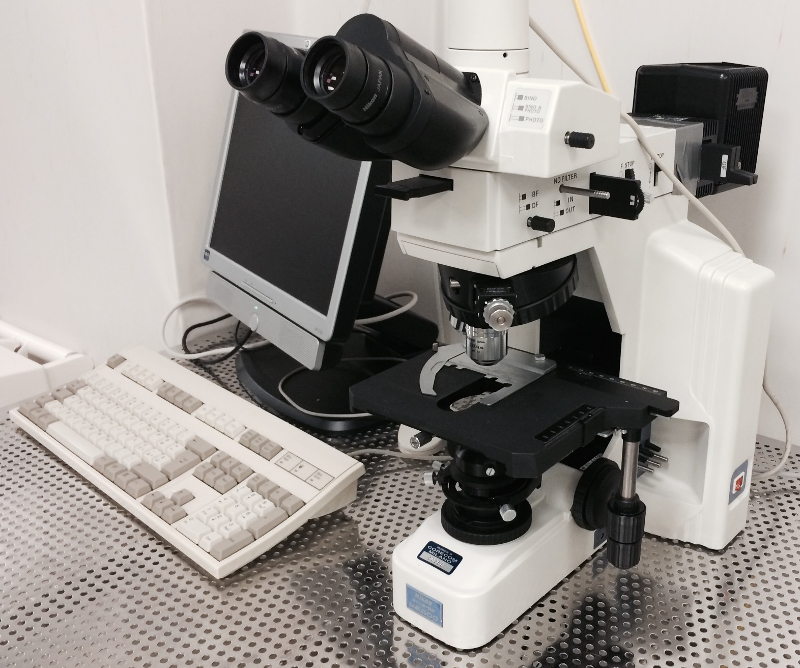
Description:
Eclipse ME600P/600D. Click here to see accessories for the ME600P/600D. Crystallography and ceramics. Nikon's Eclipse ME600 series is designed to meet all your needs. Next-generation ergonomic design. Diaphragm mechanism eliminates manual settings, streamlining your inspection. If you switch to. Description: Nikon Eclipse ME600 is optical microscope equipped with three objectives (20x, 50x and 100x) and an incident (epi) illumination system. The microscope can be used in differential interference contrast (DIC) imaging, which is an imaging method based on the contrast difference of the samples, and in dark field (DF) mode.
Richard Chiasson of Micro Video Instruments explains the Nikon E200 Eclipse Microscope parts, operation, and maintenance for the GCC Science Department. Eclipse series microscopes allows ergonomically sound operation in a natural posture as well as higher structural rigidity. Outstanding optical performance and versatility The E600 biological research microscope with Nikon’s revolutionary CFI60 infinity optics provides dramatically improved performance in all applications. Downloading Nikon Eclipse Me600 Manual from our website is easy, so you shouldn’t have any problems with it even if you’re not very tech-savvy. We make sure that our database is constantly expanded and updated so that you can download all the files you need without any problems.
Nikon Eclipse ME600 is optical microscope equipped with three objectives (20x, 50x and 100x) and an incident (epi) illumination system. The microscope can be used in differential interference contrast (DIC) imaging, which is an imaging method based on the contrast difference of the samples, and in dark field (DF) mode. With DIC and DF, it is possible to see details from optically transparent samples that are invisible in the ordinary microscope images.Working principle
Differential Interference Contrast (DIC) This method, an extension of polarization contrast, is suitable for the visualization of even minute differences in height on surfaces. A birefringent prism (4) is used which splits the polarized light beam into two partial beams on its way to the sample. These two partial beams strike the sample (6) with lateral displacement from each other. If the surface is completely flat, nothing will happen. However, if there is a small step between the partial rays, one of the two beams has to travel along a path which is 2Δh longer. Once the partial beams have returned via DIC prism (4) and analyzer (7), they display the same direction of vibration again and can interfere with each other in the intermediate image. The path difference experienced on the surface then changes into grey values which can be seen by the eye: steps become visible in the form of relief. As an auxiliary object, the lambda-plate (7a) finally changes the grey values into colors again. Dark Field (DF) The light is emanating from the illumination lamp and collimated by the Collector. Most of the light is then blocked by the Condenser-aperture-diaphragm, which has a central stop that blocks the central rays of the beam. The light is then reflected by a 45° mirror with a circular hole in the center. In this way the light travels towards the sample on the outside of the actual objective lens. It is then focused on the sample by an inner mirror at the end of the objective housing. Light is deflected by any unevenness on the sample surface, and part of it is passed back via the objective lens to the eye of the operator. In this way, no directly (specularly) reflected light is seen by the operator (i.e. a perfectly clean mirror surface appears black). Only height differences, given by the dust and edges, on the surface are seen in the image.Bright field (left) and dark field (right) images of a test sample. In DF only the edges are visible.
Nikon Eclipse Me600 Manual Troubleshooting


Nikon Introduces Eclipse ME600L Industrial Microscope Offering Flexible Illumination Options
avr. 16, 2001

The Nikon Eclipse ME600L microscope has been designed for a variety of industrial applications including observations of translucent and transparent materials, such as mineral samples, PCBs, LCDs or films. Using Nikon's patented CFI60 infinity optical system, the ME600L is also capable of reflected and transmitted illumination techniques.
With a 60mm parfocal distance and larger objective diameter, Nikon's CFI60 optics provide both longer working distances and higher numerical apertures. The results are extremely sharp, high contrast images with virtually no flare. The ME600L also features a flexible epi-illuminator with a 12V/100W halogen lamp, ensuring bright images in brightfield, darkfield, and when doing differential interference contrast or qualitative polarizing observations.
For applications requiring additional illumination, mercury, xenon and metal halide light source options are available. Also, for transparent and translucent materials, the microscope stand incorporates a built-in light source for diascopic illumination and an episcopic/diascopic changeover switch.
In addition, the microscope features the industry leading ergonomic advances for which Nikon is celebrated. Controls are located so that hand movements are instinctive, eliminating the need to reach forward and twist or lift arms from the table. The fine focus knob and the stage handle can be controlled with one hand.
Nikon Eclipse Me600 Manual User
Like all Nikon industrial microscopes, the ME600L stand is exceptionally rigid, for enhanced vibration resistance. Thanks to the ultra-stable design, images remain clear and in focus at all magnifications. Using the most advanced Computer Aided Engineering (CAE) methodologies, the ME600L's rugged body has been designed to withstand the weight of a full complement of accessories without any deterioration in image sharpness due to vibration.
For more information on the Eclipse ME600L industrial microscope, contact Nikon Instruments Inc., Industrial Department, 1300 Walt Whitman Road, Melville, NY 11747; phone 800-52-NIKON, ext. P1018, or visit the Nikon website and Microscopy U.
###
ABOUT NIKON INSTRUMENTS INC.

Nikon Instruments Inc. is the US microscopy arm of Nikon Healthcare, a world leader in the development and manufacture of optical and digital imaging technology for biomedical applications. For more information, visit https://www.microscope.healthcare.nikon.com/ or contact us at 1-800-52-NIKON.
Press Contact:
Kristina Corso
Hot Paper Lantern
email hidden; JavaScript is required